Are you interested in learning Moroccan Arabic? Whether you’re planning on taking a trip to Morocco, in a relationship with a Moroccan, or just curious about learning the language, you are in the right place. I am going to teach you about everything you need to get started in the language. In addition, I’ll provide you some guidelines on how to take your learning to the next level.
Moroccan Arabic or Darija is a dialect of the Arabic language. The language itself has been heavily influenced by the Berber language and French. It has also been influenced by other languages but they influenced to a lesser extent. Many Arabs find it difficult to understand Darija, some claiming that the language is not Arabic.
Through the years of my journey of studying Arabic and Moroccan Arabic, I found that Moroccan Arabic was in fact Arabic. The language may sound different and some of the words may be different but it is indeed based on Arabic.
Should I learn Arabic before learning Moroccan Arabic?
While the language is based on Arabic and learning Arabic would help, you don’t really need to learn Arabic before learning Moroccan Arabic. Besides some of the words and a few rules of grammar, at the end of the day, you are going to be learning Arabic.
Moroccan Arabic is also known as an oral language. This means that the language is mostly used as a spoken language. There isn’t really a formal written or reading component when it comes to learning the Darija dialect. However, with the popularity of text messages, there has been some sort of common rules used and I will be going through these as well.
Here are topics we will go through to help you get started with learning Moroccan Arabic
- Alphabet and sounds
- Nominal sentences
- Numbers
- Masculine and Feminine
- Possession
- Verbs
- Negation
- Comparison
- Imperative
- Path to succeed
- Resources
Alphabet and sounds
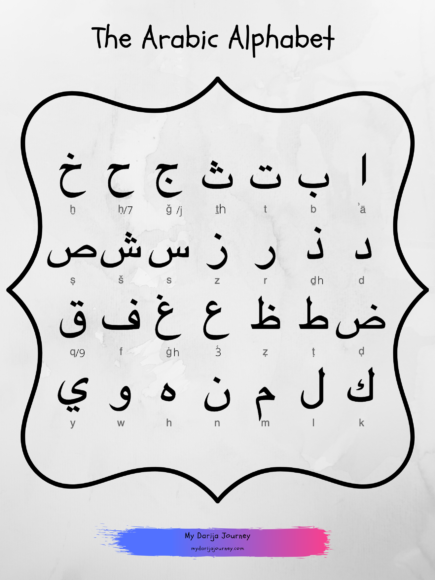
The chart above shows the Arabic Alphabet. Using the chart we see the corresponding English letter and thereby establish the correct sound. There are some differences between the letters which we will go through.
Omitted letters in Moroccan Arabic
In learning Moroccan Arabic, there are certain letters that are not pronounced. They are instead replaced with other letters. Let’s go through some of these letters.
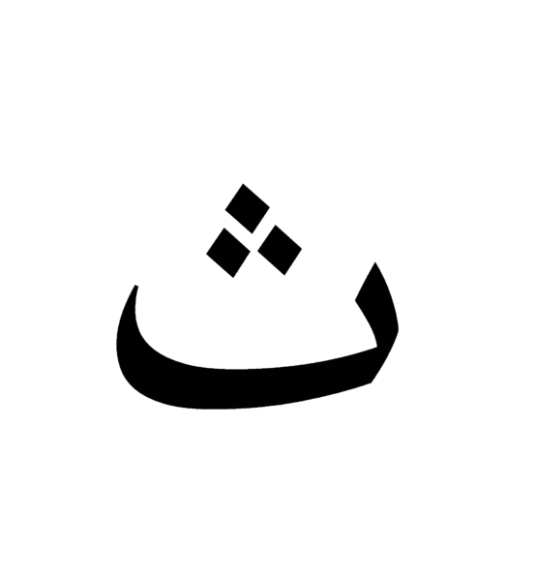
In standard Arabic, it is pronounced as Th but in Moroccan Arabic, it is pronounced as T. For example in Arabic the word for refrigerator is “thalaja” but in Moroccan Arabic is “talaja”.
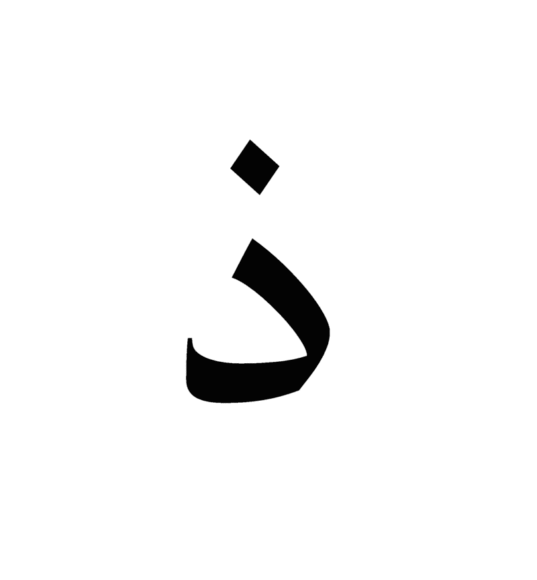
In standard Arabic, it is pronounced as “dh”. This may sound strange and I’ll try to explain it. It’s like trying to combine the sounds of d and th together. In Moroccan Arabic, this letter is omitted and the sound is replaced with d.
The additional letter used in Moroccan Arabic
There is an additional letter used in Moroccan Arabic that is not found in standard Arabic.
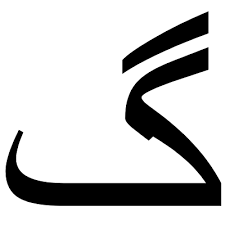
This letter produces a G sound. Although you will not find this letter in standard Arabic, there are some signs in Morocco where you will see this letter used.
Difficult sounds
There are a few letters that are just too difficult for me to explain with written words. Instead, I’m providing some videos that will help you to understand the sound.
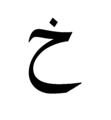
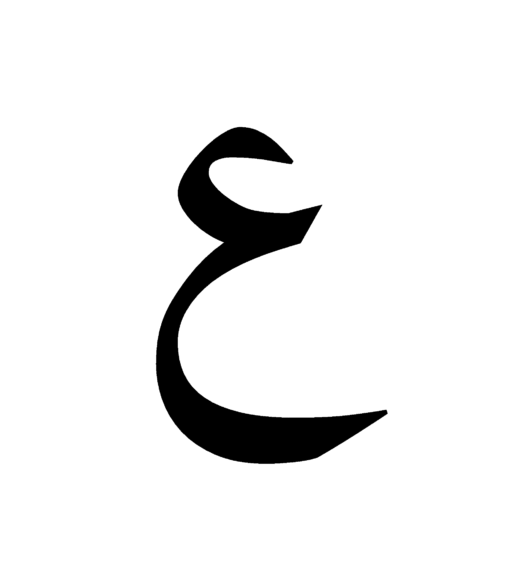
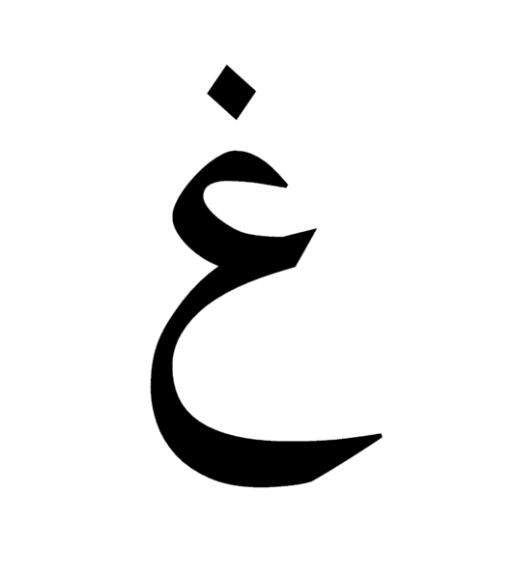
Writing
Lastly, I would like to touch on writing in Moroccan Arabic. As I mentioned earlier, Moroccan Arabic is more or less an oral or spoken language. There isn’t really a writing or reading component. Writing and reading used to be done in standard Arabic. If you think about it, this is the way it’s done in most languages in all parts of the world. Most dialects have words that we don’t really use when reading and writing.
With the popularity of text messages, this is changing and the dialects are being used in communication. If you are using Arabic text writing with Darija is fairly easy. Just remember to replace the omitted letters with the Moroccan letters used to replace those letters.
With Latin script, it is a bit tricky but fairly easy once you practice writing a few times. The following letters are replaced with numbers
 | 5 |
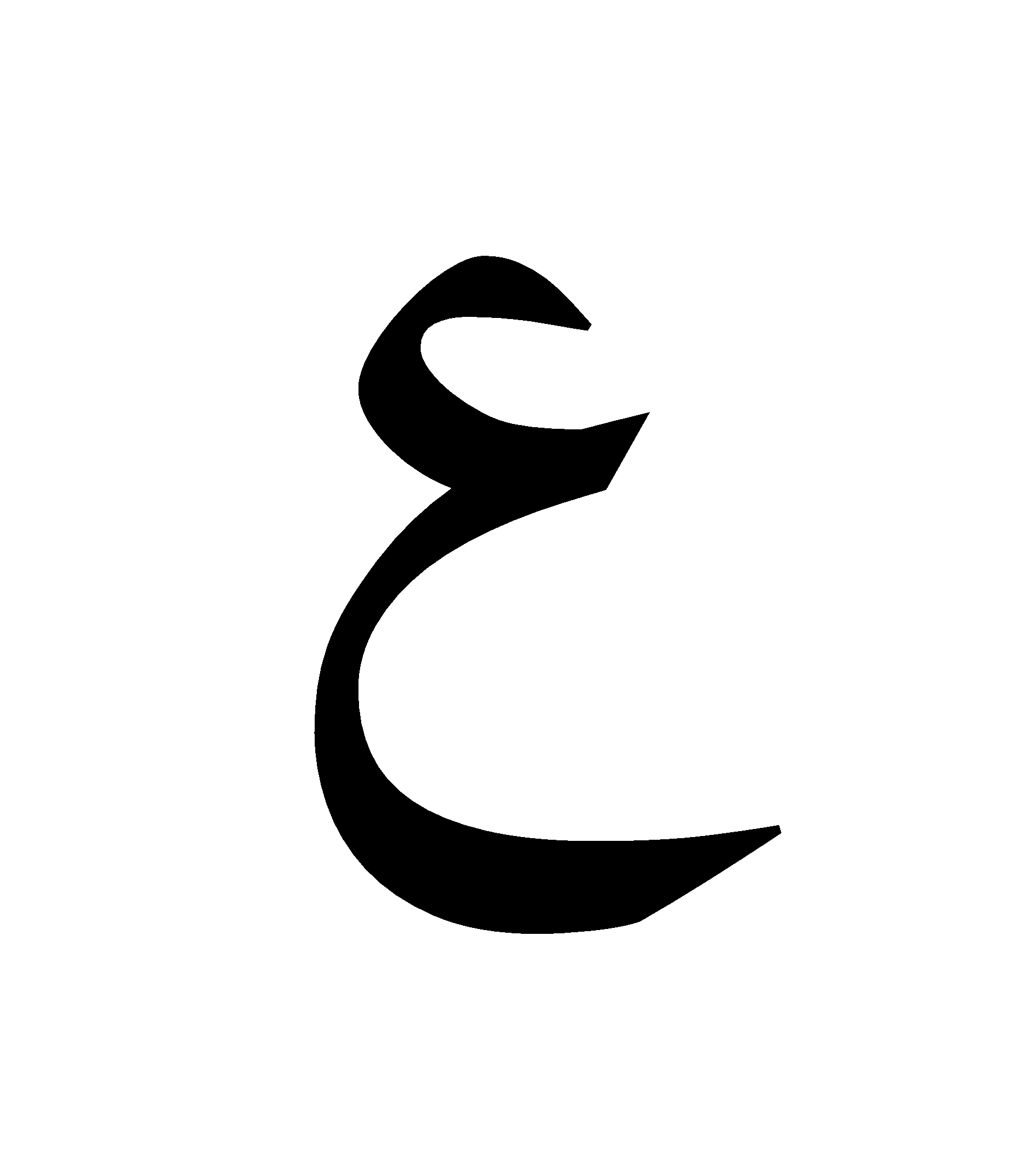 | 3 |
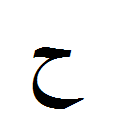 | 7 |
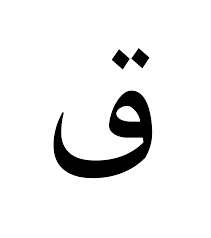 | 9 |
If you’re interested in more information to check out my article on what’s up with the numbers in Darija.
Note:
When reading texts you may find words that seem to be missing vowels. This is used to emphasize the speed that the word is spoken. You will find in learning Moroccan Arabic that the language is spoken quickly and adding vowels will just lengthen the sound of the word.
Nominal Sentences
A nominal sentence is a sentence where the subject is not a verb. It consists of a subject and a predicate. The subject could be a single noun or a phrase but cannot be a complete sentence. The predicate can be a word, phrase or complete sentence. In Moroccan Arabic, it is the same concept. Let’s look at a few examples.
| Moroccan Arabic | English |
|---|---|
| hada ktab | This is a car |
| tonobil lli 7amra ghaliya | The car which is red is expensive |
| Omar rajl atwal f lmdina | Omar is the tallest man in the city |
Where is the word “is”?
In the following examples, you find the word “is” at least once in English in every example. In Moroccan Arabic, you will not see the word “is”. The reason for this is because in Arabic the word “is” is not used in nominal sentences. If you look at the example hada ktab, if translated literally, it would be “this a book”. The word “is” is assumed in these types of sentences. When learning Moroccan Arabic, try not to think about translating the word “is”, just leave it out when trying to make sentences. What about ktab? Why was that translated to “a book”?
Definite vs Indefinite
The words in the predicate can be either used in a general and specific term. In the example “this is a book”, the word book is used in a general sense. It’s referred to as indefinite. In Moroccan Arabic, when a word is indefinite, you automatically add the letter “a” before the word. This is the reason why we translate the sentence hada ktab to this is a book. The word ktab is indefinite so ktab is translated to a book. Supposing we wanted to make a sentence but this time we wanted to make the word book definite. Let’s say the sentence we wanted to say is the book is big. How would we do this?
The translation would be lktab kbir. Did you notice the l prefixed to ktab? This l makes the word it is prefixed to a definite word. For those of you who have some French experience, this l is just like the word ‘le’ and is pronounced as le but in a much quicker way. If you want to learn more about this topic just click here. Now here is where things will seem tricky. Some letters do not use the l to define the word as a definite word. This is where we need to understand the Sun and Moon letters.
Sun and Moon letters
When we speak about the Sun and Moon letters, they are just names used to divide the letters into one of these categories. The letters even divided into the Sun and Moon categories. The following letters are classified as moon letters.
- b – ب
- j – ج
- ح – 7
- kh – خ
- 3 – ع
- gh – غ
- f – ف
- ق – 9
- k – ك
- m – م
- h – ه
- w – و
- y – ي
Whenever a word starts with a moon letter and you want that word to be definite, you will add an ‘l’ to the beginning of the word. Just as in the example earlier lktab – the book, the word ktab starts with a moon letter. Therefore, we add an ‘l’ to the word to make it definite. What about the Sun letters? What happens with those letters?
In Moroccan Arabic, when a word starts with a sun letter and you want to make that word definite, you do nothing. Now I know the question you’re going to ask, “If I do nothing, how do you tell the difference between an indefinite and definite word that starts with a Sun letter?”
Well saying this is not 100% correct. What is done is the first letter is lengthened in pronunciation. The word for a car in Moroccan Arabic is tonobil. To make it definite, we just lengthen the “t” sound when pronouncing the word. To represent it in writing, I suppose you could write it as t-tonobil, but like I mentioned previously, Moroccan Arabic is an oral language. There are not really rules when it comes to writing. You may even see the word unchanged as tonobil and it’s up to you to decipher. Just remember Sun letters are lengthened when they become definite. If you want to learn more about the Sun and Moon letters, I wrote an article about this a while ago. Check it out here.
Adjectives
Adjectives in Moroccan Arabic are really interesting because they differ from English. In Moroccan Arabic the adjective comes after the noun. So for example, if you want to say “the blue book”, the translation is literally “the book blue” (lktab zra9). If there are multiple adjectives, you list them after the noun and the last adjective will be translated as the first adjective, then the second last adjective will be translated as the second adjective and so forth.
Combining multiple definite words in the subject
This topic is more than a beginner level but the use of this is so common, I want you to be aware. So remember the sentence “the book is big”? Suppose we want to say “this book is big”. In both sentences the book is definite but the second sentence doesn’t have the word “the” in it. In Moroccan Arabic “this book is big” is “had lktab kbir. Notice the lktab (the book) is in the sentence. When the word “had” is used and immediately following is the definite word, these two words form the subject.
Remember, a nominal sentence must consist of a subject and a predicate. If “had lktab” is the subject, then the sentence is incomplete. You must have a predicate following “had lktab”.
Numbers
Numbers from 0 – 20 in Moroccan Arabic are straight forward. It’s after the number 20 when the numbers becomes a bit tricky. Let’s start with listing the numbers 0 to 20
- 0 – sifr
- 1 – wa7ed
- 2 – jooj
- 3 – tlata
- 4 – rb3a
- 5 – khmsa
- 6 – setta
- 7 – sb3a
- 8 – tmaniya
- 9 – ts3ud
- 10 – 3ashra
- 11 – 7dash
- 12 – tnash
- 13 – tltash
- 14 – rb3tash
- 15 – khmstash
- 16 – settash
- 17 – sb3tash
- 18 – tmntash
- 19 – ts3tash
- 20 – 3ishreen
Simple enough. Just spend some time memorizing these numbers and you should be good to go. So how do you say 21 in Moroccan Arabic?
Double Digits
wahed w 3ishreen. If you’re confused, I don’t blame you. I was confused, the first time I learned numbers. wahed w 3ishreen translates to 1 and 20. So the rule is that you say the second digit first, say “and” and finally say the second digit. So now that we know the rule how do you say 22? jooj w 3ishrin? Wrong.
The answer is tneen w 3ishrin. With the double digits we don’t use the word jooj and instead use the word tneen. How about 30, 40, 50, etc…?
Multiples of 10
For the multiples of 10 here are the numbers.
- 10 – 3ashra
- 20 – 3ishrin
- 30 – tlatin
- 40 – rb3in
- 50 – khmsin
- 60 – sittin
- 70 – sb3in
- 80 – tmanin
- 90 – ts3in
These multiples of 10’s don’t follow the rules of the other double digits and are just said as listed above.
Hundreds and more
Here is a list of the numbers in hundreds
- 100 – mia
- 200 – miateen
- 300 – tlta mia
- 400 – rb3a mia
- 500 – khmsa mia
- 600 – setta mia
- 700 – sb3a mia
- 800 – tmaniya mia
- 900 – ts3a mia
Notice the number 200 looks different from the rest. It’s said as jooj mia or tneen mia. The reason for this is because this word inherits some grammatical properties from standard Arabic. For now just know that 200 is said as miateen.
The word for 1000 is alf. For the number 2000, just like with what happened with 200, the word is said as alfeen. The rest of the multiples of 1000 follow the same rules as the multiple of the 100’s (tlta alf, rb3a alf, etc…)
Finally, let’s see the rest of the big numbers
- 10,000 – 3ashralaf
- 100,000 – mialaf
- 1,000,000 – million
- 10,000,000 – 3ashra million
- 100,000,000 – mia million
- 1,000,000,000 – millard
Putting them together
Remember that section on double digits? The way those numbers are pronounced differently than in English? Well, only double digits work this way. If I wanted to say 346, then I would say three hundred six and forty (tlta mia setta w rb3in). So just remember the double digits are the only ones that are said differently and the rest of the numbers are said the same way as English. If you’re feeling confident try saying this number 8,937,456.
Note
When Moroccan’s are exchanging phone numbers or any numbers in general, they are pronounced in pairs. So the number 596495 is looked at as this 59-64-95 (ts3ud w khmsin rb3a w sittin khmsa w tis3in).
Masculine and Feminine
In Moroccan Arabic words can either be masculine or feminine. Depending on whether the word is masculine or feminine, will determine which pronounces will be used or how the verbs are conjugated. The general rule is the word is masculine unless it falls into one of the categories in the table below.
| Categories that make the word feminine |
|---|
| The word ends with an a |
| Female names |
| Parts of the body that come in pairs |
| Cities |
| Names that refer to females |
Unfortunately, there are exceptions to this rule. Some words like war (7arb) or fire (nar) don’t fall into any of the categories but they are feminine words. The only way you will know the words are feminine is through the context of the sentences. I wrote an article some time back that was an in-depth look with Masculine and feminine words. If you are interested in learning more about Masculine and Feminine words, click here.
Possession
Possession in Moroccan Arabic occurs in one of two ways.
Moroccan Arabic borrows the same grammatical concept as standard Arabic, where the personal pronouns (I, you, he, she, we, they) are attached to the end of the noun. some examples are ktabk (your book), maganti (my watch), kasu (his cup). Click on the Standard Arabic link to learn more.
This is the other method used to describe possession in a sentence. This method is only used in Moroccan Arabic or Darija. With this method, you make the noun definite, add the word dyal and then append the personal pronoun to dyal. An example would be lktab dyali (my book). To learn more click on the dyal link
Possession can also occur with 2 nouns. For instance, the sentence “the man’s pen” can be expressed with both methods as listed below.
- stylo r-rajl (I’m only adding the second r to emphasize the sound since the letter r is a sun letter)
- stylo dyal rajl
We have now covered most of what you need with nouns. It’s time we start with verbs. Verbs work differently than nouns and can get complex. What I will be covering will get you started with verbs. The information will be sufficient for you to make verbal sentences. These will help you express yourself with native speakers.
Verbs
In Arabic, all words are derived from verbs. From these verbs, you can derive all words. The verbs consist of 3 or 4 letters in the past tense. Learning verbs is essential to learning vocabulary in Arabic. Moroccan Arabic follows the same except that some words are borrowed from other languages (French, Berber etc…) so they do not have an original verb. Let’s take a look at the conjugation of verbs in Moroccan Arabic.
Conjugating
Conjugating verbs is not as difficult as you might think. Remember verbs are either 3 or 4 letters and the majority of verbs you will encounter will be 3 letters. While you might not know the correct pronunciation, as long as you use the correct format, you will eventually know the right way to say the verbs. Here is a table on the different conjugation of verbs.
| He |
| She |
| You (masculine) |
| You (feminine) |
| I |
| We |
| You (plural) |
| They |
This is the order we usually conjugate verbs. We start with “He” instead of “I”, which may seem strange but this how I was taught to conjugate verbs. Let’s start with past tense verbs.
Past
Verbs in the past tense are the original form of the verbs and the basis of all words derived from that verb. In order to conjugate past tense verbs, you just need to append the appropriate letter/s to the verb.
The following table will further explain the conjunction of past tense verbs.
| Personal pronoun | The change to the verb |
|---|---|
| He | no change |
| She | -at added to the end of the verb |
| You (masculine) | -ta added to the end of the verb |
| You (feminine) | -ti added to the end of the verb |
| I | -t added to the end of the verb |
| We | -na added to the end of the verb |
| You (plural) | -tu added to the end of the verb |
| They | -u added to the end of the verb |
Example
So let’s go through an example with the verb ktb- to write or more specifically he wrote
- ktb – he wrote
- ktbat – she wrote
- ktbti – you wrote (masculine)
- ktbti – you wrote (feminine)
- ktbt – I wrote
- ktbna – we wrote
- ktbtu – you wrote
- ktbu – they wrote
As we see in the example above, changes happen only at the end of the verb. This makes the past tense verbs the easiest to conjugate. We will see with the present tense verbs that things get a bit trickier
Present
The present tense verbs have changes that occur at the beginning of the verb and sometimes at the end of the verb as well. The following table will illustrate the changes.
| Personal pronoun | The change to the verb |
|---|---|
| He | -y added to the beginning of the verb |
| She | -t added to the beginning of the verb |
| You (masculine) | -t added to the beginning of the verb |
| You (feminine) | -t added to the beginning of the verb and -i added to the end of the verb |
| I | -n added to the beginning of the verb |
| We | -n added to the beginning of the verb and -u added to the end of the verb |
| You (plural) | -t added to the beginning of the verb and -u added to the end of the verb |
| They | -y added to the beginning of the verb and -u added to the end of the verb |
Notice how she and you (masculine) use the same change for present tense verbs? Unfortunately, the only way to know the difference between these two in a sentence is by context. Let’s go through an example
- yktb – he writes
- tktb – she writes
- tktb – you write (masculine)
- tktbi – you write (feminine)
- nktb – I write
- nktbu – we write
- tktbu – you write (plural)
- yktbu – they write
Some people pronounce the “y” letters in the present tense verbs as “i”. So instead of yktb, they will say iktb. Either pronunciation is correct and is understood by Moroccan Arabic speakers.
Future
Future tense verbs are actually present tense verbs with one of two distinctions. Either it uses the word ghadi in front of the verb or gha is added to the front of the present tense verb. We will use our favourite verb (ktb) to illustrate the use of both verbs.
| Ghadi | Gha |
|---|---|
| ghadi yktb – he will write | ghayktb – he will write |
| ghadi tktb – she will write | ghatktb – she will write |
| ghadi tktb – you will write (masculine) | ghatktb – you will write (masculine) |
| ghadi tktbi – you will write (feminine) | ghatktbi – you will write (feminine) |
| ghadi nktb – I will write | ghanktb – I will write |
| ghadi nktbu – we will write | ghanktbu – we will write |
| ghadi tktbu – you will write (plural) | ghatktbu – you will write |
| ghadi yktbu – they will write | ghayktbu – they will write |
As long as you master the present tense verbs, future tense verbs should be a breeze. Just add ghadi or “gha” to your verb. When I was first learning Moroccan Arabic future tense verbs, I always stuck with ghadi because it felt easier to add another word. As I continued studying and trying to speak faster I found myself using the “gha” form more and more. To learn more about future tense verbs, check out my article by clicking here.
Weak letters
ktb is a common word used for conjugating. It allows us to illustrate all the verbs forms easily. However, some verbs have exceptions because they contain weak letters.
Weak letters are letters that change in between the tenses. They are also used to lengthen the sound of a word. The weak letters are A, W, and Y. In standard Arabic in some situations, the weak letter will be omitted.
Let’s take the word 9ra (to study). In the past and present tense, certain pronouns will change the sound altogether. I’ll illustrate this by conjugating in both the past and present tense.
Conjugation of 9ra (to study)
| Past | Present |
|---|---|
| 9ra – he studied | y9ri – he studies |
| 9rat – she studied | t9ri – she studies |
| 9rita – you studied (masculine) | t9ri – you are studying (masculine) |
| 9riti – you studied (feminine) | t9rii – you are studying (feminine) |
| 9rit – I studied | n9ri – I am studying |
| 9rina – we studied | n9rau or n9raw – we are studying |
| 9ritu – you studied (plural) | t9rau or t9raw – you are studying (plural) |
| 9rau or 9raw – they studied | y9rau or y9raw – they are studying |
As we see in the table the original letters change with weak letters. Notice when I conjugated you are studying (feminine), I added an extra “i” (t9rii). This is so we can distinguish between masculine and feminine forms. The reason for the further changing of the letters/sounds is to allow the sound of the verb to flow more naturally. While I can’t go through every verb with a weak letter, the point I want to make is that with weak letters there are further changes to the structure of the verb.
Putting verbs to use
Now that we have seen how to conjugate verbs, we will look at how these are used. In verbal sentences, the verb will come first, then the doer of the verb and then, followed by the object of the verb. With personal pronouns, this may look confusing as the “doer of the verb” is actually attached to the verb but it makes sense when there isn’t a personal pronoun as shown in the following example.
ysug r-rajl t-tonobil – the man is driving the car
If you’re confused, don’t worry. Always put the verb first and then ask these 2 questions:
- Who is doing the action?
- What is the action being done to?
Negation
I wrote something about negation a while back. The article basically states in order to negate in Moroccan Arabic, there 3 ways.
la
The meaning of “la” is no and is used just like in English with an answer to a yes and no question.
mashi
For nominal sentences, mashi is used to say not and negate the sentence.
ma + verb + sh
For negating verbs, you add “ma” to the front of the verb and “sh” to the end of the verb.
Comparison
Supposing you want to say I am better than that man. How do you say that? Well the answer is
ana hssn mn dak rajl
The verb we are using is hssn but look at what follows the verb. When you see the verb followed by mn this combination is used to make a comparison. This can also be done with personal pronouns, the only difference is that the personal pronoun will be attached to “mn” For example the sentence I am better than you is translated as ana hssn mnk.
Imperative
The first time I saw the word imperative, I had no idea what this word meant. I understand it now as command someone else to do something. Some examples are “Go to your room”, and “Get up”. In Moroccan Arabic, you basically use the verb. If I wanted to say “Get up”, I would say noud.
If speaking to a female in the imperative, you will have to add an “i” to the end of the verb. So in our previous example, if I wanted to tell a female to get up, I would say noudi.
Special note
One of the examples I gave was, “Go to your room”. The verb go is msha but when used in the imperative form, the word is changed to seer. I’m not sure why this happens but whenever you need to tell someone to go you need to say seer or seeri.
Path to succeed
If you made it this far, congratulations. You have everything you need to get started in Moroccan Arabic or Darija. Everything I wrote here is to help you to understand the grammar and how it is used in Moroccan Arabic. So how do you eventually become fluent in Moroccan Arabic?
Most people I spoke to or read about have become fluent by spending a year in Morocco at some sort of school that teaches foreigners Moroccan Arabic. Most of the students will stay with a Moroccan family and through this immersion, they will eventually become fluent. Unfortunately, I don’t have any information about these types of programs. Otherwise, I would have listed them here for you.
For me, studying in Morocco was not an option. I figure for the majority of you are in the same boat. So how can you become fluent without spending a year in Morocco?
I’m going to provide you with some general guidelines to help you achieve fluency. Before I begin I should warn you, learning Moroccan Arabic takes a lot of work. You need to work on this every day. If you start to skip days working on this, you will not progress. The aim of this is to build your skillset day by day until words become familiar, then sentences, and then finally full conversations.
Level 1
3- 6 months
At this stage, you will have very little knowledge of Moroccan Arabic. This article can be used to help you with grammar. Now you just need to fill in the rest.
- learn 5 – 10 words per day
- practice conjugating all verbs
- learn common phrases
- listen to simple conversations
- practice writing sentences to get used to the format of the sentence structure.
Level 2
3- 6 months
Now you have some vocabulary under your belt. You know some common phrases. With your vocabulary you’re able to make all sorts of sentences. At this stage, you will need to practice with someone. You may be just messaging for now but you will want to start communicating and putting those words you learned to use, as well as learn new words.
- Communicate with native speakers with messages – You may not understand what they are saying but you should now know how to say I don’t understand, can you repeat that or I don’t know what that word(s) mean. I should warn you be careful who you meet on the internet or social media. There will be people including native speakers who will claim that they have ‘X’ years of experience teaching non moroccan speakers. Once they start to receive money from you. They will string you along, teaching you the very little to achieve fluency.
- Continue learning phrases and using them in sentences
- Continue listening to conversations
- Listen to the radio – this is merely an exercise to get used to hearing the speed of the conversation, not necessarily to understand what is being said
- Listen to Moroccan songs
- Practice saying sentences aloud
Level 3
6- 12 months
You should now have quite a bit of knowledge now. You’re able to message people and understand messages sent to you. Saying words are easy for you. At this level, you need to speak with someone. A tutor would be ideal at this stage but if you can only find a penpal that would be good. Even if things spoken to you are unknown, you have the skills to ask more questions to understand the context.
- Speak with native speakers daily
- Start to watch programs in Moroccan Arabic
- Continue to listen to the radio
- Listen to Moroccan music
These levels are cumulative, meaning that at level 2 you’re still trying doing the steps at level 1 and level 3 you’re doing the steps of level 1 and 2. I told you this is a lot of work but, if you are serious about learning Moroccan Arabic, this is the plan I recommend.
Resources
Here are some resources to help you with the steps at each level in learning Moroccan Arabic.
Great for: Learning words/verbs
I started out using this website to learn new words. Eventually, I outgrew this site and needed to find other resources with learning Moroccan Arabic. However, this is a good first step.
Great for: Learning words/verbs, learning phrases
A great app to learn new words and phrases. It’s not only limited to learning Moroccan Arabic, there are many more different languages in this app.
Great for: listening to conversations, learning phrases
An excellent audio program that will aid you in learning Moroccan Arabic conversation by listening.
Great for: learning new words, translating conversations
When you start to communicate with native speakers there will be words you do not know in the beginning. Instead of constantly asking what the translation is, you can easily use a dictionary to find the meaning of the word.
Great for: learning new words, learning phrases
This is an excellent book for learning Moroccan Arabic everyday phrases. This will help you to speak like a native speaker.
Great for: Listening to conversations on the radio
When you’re ready to start listening to conversations, this internet radio station will let you listen to Moroccan Arabic online.
Great for: Every level
I originally built this site as accountability for myself as I was learning Darija. After 2.5 years, this site has a wealth of information. In addition, the member’s section has word lists, real-life conversations, Music lyrics, and advanced learning articles that will further help you with learning Moroccan Arabic. If you’re looking for just one place for your learning this site is the best resource for you.
Want to learn more? Join the Discord server https://discord.gg/QC4w5NCtM4
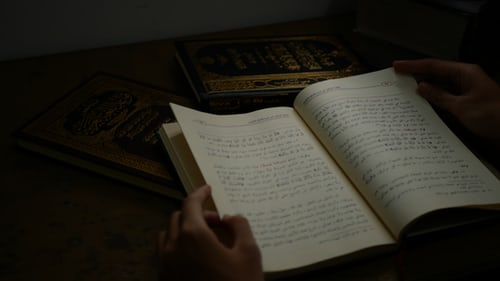

You listed some very nice resources there. One thing we were lacking during our language studies was a good online dictionary. So we created our own dictionary app – with audio recordings of every Arabic word of native Moroccans. Also every word comes with Arabic and Latin transliteration. It also contains example sentences for many of the words and explanations when there are multiple translations for one word. Currently it contains more than 2,500 words but new words are going to be add. You’ll find the app here: https://play.google.com/store/apps/details?id=de.ferhana.darijadict